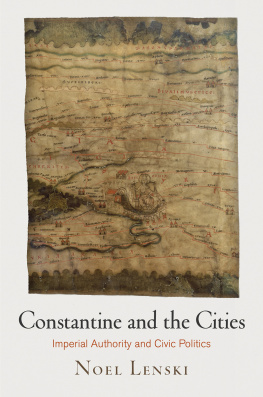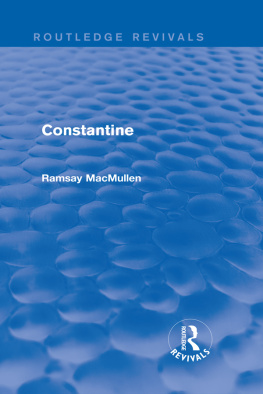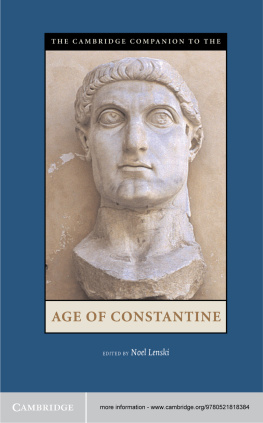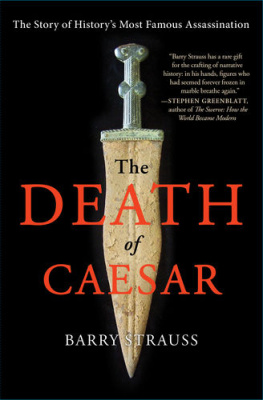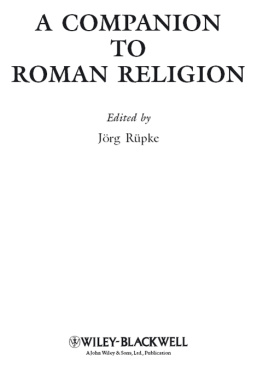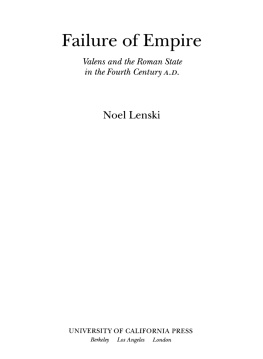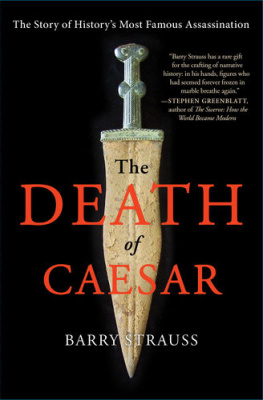Contents
Page List
Guide

CONSTANTINE AND THE CITIES

EMPIRE AND AFTER
Series Editor: Clifford Ando
A complete list of books in the series is available from the publisher.
CONSTANTINE
AND THE CITIES

IMPERIAL AUTHORITY AND CIVIC POLITICS
NOEL LENSKI

UNIVERSITY OF PENNSYLVANIA PRESS
PHILADELPHIA
Copyright 2016 University of Pennsylvania Press
All rights reserved. Except for brief quotations used for purposes of review or scholarly citation, none of this book may be reproduced in any form by any means without written permission from the publisher.
Published by
University of Pennsylvania Press
Philadelphia, Pennsylvania 191044112
www.upenn.edu/pennpress
Printed in the United States of America on acid-free paper
1 3 5 7 9 10 8 6 4 2
Library of Congress Cataloging-in-Publication Data
Lenski, Noel, author.
Constantine and the cities : imperial authority and civic politics / Noel Lenski.
pages : maps ; cm. (Empire and after)
ISBN 978-0-8122-4777-0 (alk. paper)
1. Constantine I, Emperor of Rome, 337. 2. Constantine I, Emperor of Rome, 337Influence. 3. RomeHistoryConstantine I, the Great, 306337. 4. RomePolitics and government284476. 5. RomeReligion. 6. Power (Social sciences)RomeHistory. 7. Social changeRomeHistory. 8. Christianity and politicsRomeHistory. I. Title. II. Series: Empire and after.
DG315.L46 2016
937.08dc23
2015022966
For Paul
From whom I have learned much
CONTENTS

LIST OF MAPS

INTRODUCTION

Many Faces of Constantine
Constantines Past
Within two years of Constantines death in 337, Eusebius of Caesarea put the finishing touches on his Life of the Blessed Emperor Constantine, the single best source we have for understanding this pivotal ruler.
If the story had stopped here, we might have had no clear idea of just how complex and difficult a subject Constantine is. But, fortunate for us if not Eusebius himself, the Life was used by few readers in the years to come, and even those who encountered itespecially Socrates and Sozomenwere so keenly aware of its shortcomings that they spent a good deal of effort critiquing and correcting it. Meanwhile, within a generation, a very different Constantine began to emerge from an altogether different set of authors.
This storyline was in turn picked up and elaborated by the pagan Eunapius of Sardis, whose Histories are now lost, although their content is largely preserved in the New History of the early sixth-century historian Zosimus. Zosimus offers a complete but tendentious account of Constantines reign in his second book, which charges the emperor with illegitimate birth, diminishes his military accomplishments, mocks his administrative reforms, and attacks him for lavishing wealth on Constantinople, a city seething with wasteful luxury (truph).
A related stream of negative press can be found in a different source tradition, originally dating to the now lost Enmannsche Kaisergeschichte, which was used by Eutropius, also a pagan, although he wrote for the Christian emperor Valens. For Eutropius, Constantine was of questionable birth; he cruelly and unjustly murdered his own relatives; and he issued laws that were excessive and severe. Coming as they do from authors with no overtly religious motivation for attacking the first Christian emperor, these accounts offer a third perspective on Constantine and thus begin to reveal just how multifarious were the reactions to this complex figure.
By the mid-fifth century these conflicting viewpoints were brought into dialogue when Sozomen used chronological arguments to refute Eunapiuss charges that Constantine had converted after killing his son in hopes of expiating his crime: Crispus was executed in the twentieth year of Constantines reign, long after his conversion; moreover, Crispus himself was listed in the headings of a number of pro-Christian laws to which Sozomen had access.
Around the same period, further engagements with the negative tradition were launched from less scientific quarters. No later than the early sixth century, and likely a half-century or more before that, a legend arose that Constantine had converted not after his famous vision of the cross, but thanks to the good offices of the Roman Pope Sylvester, who had miraculously cured him of a debilitating skin disease: still a heathen, Constantine had been counseled by pagan priests to bathe in the blood of infants to remedy his malady but refused; after experiencing a vision of the apostles Peter and Paul, he made contact with Sylvester, who convinced him to receive Christian baptism; this rid him of his illness and convinced him to dedicate himself to Christianity.
In a renowned essay of 1440 Lorenzo Valla put paid to the Donation legend and opened a new era in Constantinian studies that has brought us considerably closer to understanding the emperor and his policies in their own context. It is thus surprising to learn that, despite considerable advances in source criticism, chronology, and critical method, we are in many ways no closer to arriving at a definitive picture of Constantine than we ever were. To understand how this is so, it is worth examining, even if only briefly, the perspectives of at least some of Constantines most important interpreters from the mid-nineteenth century up to the present. Superficial though it must be, such a survey will give an impression both of the development of approaches to Constantine in modern scholarship and also of the sheer breadth of opinion that continues to prevail.
Modern Constantines
Such a survey must begin with the Swiss scholar J. Burckhardt, who offered the first truly critical look at the full range of evidence available. From this vantage point Burckhardt conceived of Constantine as a sly and cynical impresario who exploited the power of the church in order to promote his own political program without ever convincing himself of the validity of Christian religion. From the mid-nineteenth to the mid-twentieth century, then, most scholars put little credence in a genuinely Christian Constantine, preferring instead to hold political motives or simple fatuousness responsible for what proved almost by accident to have been the emperors momentous decision to convert.
Opposition to this viewpoint was, however, expressed by N. H. Baynes already by 1929. His Constantine experienced a sincere conversion and became a deeply religious Christian who strove to reenact his personal convictions at the global level by tirelessly working to Christianize his subjects.
In the past fifteen years, work has appeared with dizzying rapidity, and in it the trend has been to accept a Christian Constantine but to add shading to his broader outlines by focusing on motifs other than Christianity that served as guideposts for the emperors life and rule.
Nevertheless, these Christian Constantines are by no means the only actors on the stage. Many contemporary scholars cleave to a more spiritually neutral figure, much more interested in politics and rulership than faith or religion. A. Marcones Constantine is Christian, to be sure, but became so entangled in obsessions with sexual morality, family intrigue, and dynastic politics that he diminished his impact as a standard-bearer for the faith. Without denying conversion on some level, these scholars thus refocus attention on aspects of Constantine that pull our gaze away from the classic Constantinian question.

